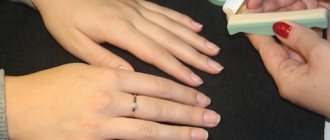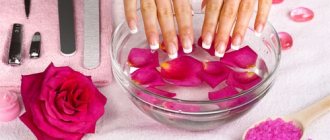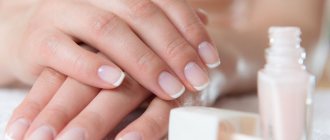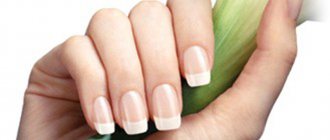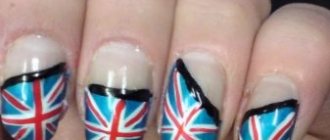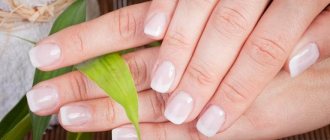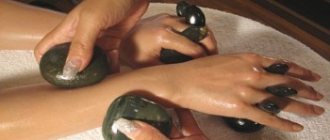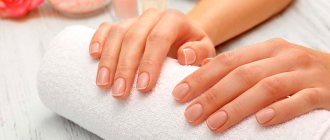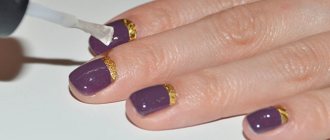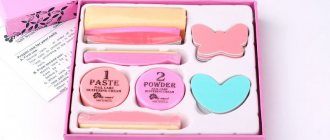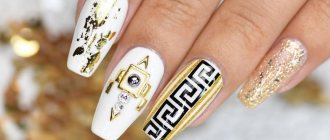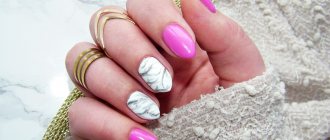Many ladies have heard about combined manicure, but few fashionistas have a complete understanding of the advantages of this technology. Meanwhile, before going to the salon or starting to work on your own nails, you should evaluate and choose the appropriate technique. Therefore, today we will analyze in detail all the features of this type of manicure and the technique of its implementation.
Characteristics of a combined manicure, relevant for 2022
This type of manicure is highly aesthetic and durable: the beautiful coating and skin around the nails remain beautiful for a month. It includes several different techniques:
- European and Japanese;
- edged, classic and hardware.
It is worth considering the differences between the technique and traditional methods in more detail.
- Most of the cuticle is removed, leaving only a neat cut, which can only be sanded using cutters. This approach always gives a brilliant result: the remnants of the overgrown skin are practically invisible.
- Often, after a trimmed manicure, the skin on the sides becomes very rough, turning into unsightly dry calluses. This is a natural protective process that is provoked by cutting off growths on the side rollers with pliers. Nail experts have found a less traumatic solution: the rollers are only polished, remaining smooth and gentle until the next trip to the salon or self-treatment of nails.
- In the case of thinned, brittle plates, the master includes healing baths and masks with natural ingredients, massage and coating with special restorative compounds in the treatment stages.
- The use of devices allows you to speed up the work process and polish rough or dead skin even with large layers. If the lady's hands are well-groomed, they use a more gentle, classic version, with the usual orange wood sticks, tweezers and scissors.
The new approach has incorporated the best, most advanced techniques for treating and improving the health of nail plates. Wide possibilities and an individual approach, taking into account the condition of women's hands, allow us to bring the nails of every fashionista to the ideal.
Manicure for neglected hands: how to quickly get them in order
Dry, cracked cuticles, rough skin and broken nails of varying lengths look extremely unattractive. In addition, this condition of the hands can be dangerous to health; small wounds become open gates for infection. An express method that combines the best techniques from classic edged and European manicure can help.
Before you start treating your skin and nails, you need to prepare everything you need:
- ceramic or glass files of various grain sizes;
- cuticle nippers;
- liquid for softening periungual ridges;
- hydrogen peroxide;
- metal pusher;
- polishing block;
- nail polish remover;
- hand bath;
- any essential oil;
- shower gel or liquid soap;
- nourishing lotion.
To achieve optimal effect, you need to act step by step. First, remove any remaining polish from the nails using a liquid that does not contain acetone. The hands are then placed in a bath of warm water, a small amount of shower gel and a few drops of lemon, rose, sweet orange or tea tree oil. After 5 minutes, wipe the brushes with a soft towel.
An acid-containing liquid is applied to the cuticle area. After 1 minute, the skin is moved with a metal pusher, and the excess is cut off with pliers. Burrs are carefully removed, and accidental cuts are disinfected with hydrogen peroxide.
You can avoid painful tears by cutting the cuticles in one confident motion and holding the tweezers at an angle.
The nails are shaped using nail scissors, and the final finishing is done with fine-grained files. The surface is thoroughly polished with a polisher, then a portion of moisturizing lotion is applied to the brushes and thoroughly rubbed into the rough areas.
You can shape your nails with a fine-grained cardboard or ceramic file.
The final stage is coating. Those with perfectly smooth nails of a pleasant pink color can limit themselves to polishing or transparent colorless varnish. However, many people like a more refined finish. The classic option is red varnish or gel, suitable for any plate shape. The drug is applied in 2-3 layers, drying each layer thoroughly. A layer of top coat with a glitter effect will help preserve your manicure for a week or longer.
What tools are needed for a combined manicure?
To perform treatment of nails and fingertips at a high level, appropriate equipment is required. What do you need to prepare?
Fraser
The device, powered by electricity or batteries, can be purchased in specialized stores or ordered online. It is necessary to pay close attention to the quality of the product. After all, the final result depends on how correctly the router performs its functions. Here are a few rules to follow when choosing:
- preference is given to well-known, proven brands;
- the device must have a power of at least 60 W;
- High-quality manicure cutters are capable of working in different modes.
Nail designers warn: cheap models from dubious manufacturers are ineffective.
Milling cutter
Removable attachments for routers have different characteristics. They look like metal elongated rods with shanks and small tip heads of different shapes and diameters.
The tips, due to their unusual configuration, are visually divided into three parts:
- a pointed or smoothly rounded nose, which is used to clean the sinus area, remove pterygium and remnants of material from the plate;
- the most voluminous part, called the belly. It is used to process and polish rollers. Depending on the type of product, it is located in the center or shifted up or down;
- the place of transition from the spout to the thickened part is called the cheek.
Cylindrical and spherical heads do not have a pronounced gradation.
They can be in the form of pyramids, cones, cylinders, ovals or balls.
View this post on Instagram
Posted by Unreel (@extremeofficial)
The most convenient for performing a wide range of tasks are symmetrical cutters with a pointed tip and a “belly” located in the middle of the tip.
They are classified according to the degree of rigidity, as evidenced by the colored rings located at the base of the heads:
- for super soft – yellow;
- normal-soft – red;
- medium hard – blue;
- coarse – green;
- very hard – black.
For a professional combined manicure, nail experts recommend choosing medium-soft “Flame” attachments with a diameter of 23 mm. They are convenient for their versatility, suitable for both cuticles and sides.
When choosing a suitable nozzle, it is necessary to take into account the head configuration. Even with the same type of stiffness and diameter, products from different companies differ in size and silhouette.
Pusher
A pusher or scraper is a special tool made of hard steel. It is intended for processing the cuticle and removing pterygium. Its working tips are located on both sides, which is quite convenient, and the rod has a grooved surface so that it does not slip in your fingers. A blade is always located on one side, and the other is selected depending on the processing technique and practical necessity. Various modifications - hatchet, spatula, peak, flat surface.
Following the recommendations of experienced craftsmen, they choose products of short length, with a narrow blade - they are more convenient to work with.
Trimming tools
To evenly cut off dead skin, you need a sharp tool made of hard steel, with good factory sharpening. Dull, low-quality blades will only wear away the cuticle, leaving a feeling of a sloppy manicure and general sloppiness. The choice of suitable tools today is quite large:
- special cutter nippers;
- small nail scissors;
- pusher with a sharp or rounded peak;
- safe clippers.
Which type of product is preferred depends on the personal habits of the craftsman.
Fact about manicure
Nails grow more actively on the working hand. So, left-handers grow better on the left, and right-handers grow better on the right. This is explained by the fact that working with your fingers has a slight massaging effect.
Advantages
Individual approach. There are many technologies for performing nail plate treatment. First, the condition of the nail plate is studied, and then the appropriate treatment option is selected.
Quality. When performing the correct combined manicure, the work is distinguished by quality and accuracy. Therefore, the process must be carried out by an experienced specialist.
The condition of the nail plate improves. Hangnails rarely appear after the procedure.
When applying a colored coating, your nails will look neat and impressive.
Safety precautions for combined manicure
Since special electrical appliances, caustic substances and sharp instruments are used when working with marigolds, it is necessary to know and carefully follow safety precautions.
General rules:
- When performing the procedure at home or in the salon, it is necessary to disinfect not only your hands, but also all surfaces. For this purpose, antiseptic agents are used, as well as treatment with quartz lamps;
- Any type of manicure is done only on healthy nails and fingers. If there are open wounds, hangnails, burns, fungal diseases, then the procedure is prohibited;
- all reusable instruments and attachments must be cleaned and sterilized using special means, frying or under a UV lamp;
- Do not use dull scissors or wire cutters.
Basic rules when working with a router:
- You cannot continuously treat the same area with a nozzle. At high speeds, the energy is partially converted into heat, which can cause serious discomfort or even cause burns or damage;
- The nozzle must be held with support on the table or the client’s finger. When the hand is suspended, there is a high probability of error or injury. Since the treatment area is miniature in size, any involuntary trembling will have negative consequences;
- the device operates at high speeds - at least 17,000 per minute, since a lower speed is ineffective. There is no need to be afraid of this: the design has been worked out for a long time, and if the rules are followed, there should be no problems.
In the process, it is important to maintain accuracy, precision and speed. Too slow movements greatly increase the temperature at the treatment site and prolong the working time.
View this post on Instagram
Posted by Unreel (@extremeofficial)
Advantages and disadvantages
Experienced manicurists claim that it is a competent combination of different types and methods of manicure that allows you to achieve the best effect. Since every woman has her own ideas about beauty and how a manicure should be implemented, the combined method makes it possible to obtain a 100% result that can satisfy every girl. However, this approach also has its drawbacks, which should be noted:
- the time costs for implementing this approach are very significant, since the method itself is quite complex and its implementation forces the master to be scrupulous;
- To perform a specific manicure, you should have a number of necessary tools that are not required in most other cases. This remark is only appropriate if the manicure is done independently at home;
- since there is no universal formula for implementing the described procedure, this complicates the process, since in order to obtain a high-quality positive result you will have to spend a certain amount of effort on experiments and training.
All these inconveniences are easily offset by advantages, which partly give rise to the undesirable conditions described above. Let us note the advantages of the procedure:
- first of all, this is an individual approach to the implementation of a combined manicure, which takes into account all possible personal features of the structure of the nail and adjacent elements;
- This procedure not only guarantees a high-quality result, which allows you to make women’s nails and fingers more neat and elegant, but also ensures the prevention of unwanted diseases of the nails and fingers.
Stages of a combined manicure
- Cuticle treatment. Using a pusher, the skin is moved and slightly raised, forming a “pocket”. The cheek of the cutter is installed in it and the pterygium is removed with a smooth, continuous movement. The resulting dust is removed with a brush. The finished “pocket” should be glossy pinkish.
- Lateral sinus. The roller is pulled back, checking the plate and skin for damage and growths. The pterygium and any abnormalities or growths are removed with a milling cutter. The ideal option is parallel, even edges.
- The rollers on the sides of the nail are treated with the belly. First, the right sides of all fingers are sanded using the “Forward” mode, after which the left sides are sanded using the “Revers” mode. The tip is moved up and down, changing the angle of inclination, until soft, smooth skin is obtained.
- Cutting off the dead cuticle is done with any convenient sharp instrument. The blades must be strictly parallel to the plate. When closed, they are immediately lifted, thereby removing the cut skin. All dead areas are removed completely.
- Next, the cuticle cut area is polished using a milling cutter. Movements are gentle, barely perceptible, so as not to cause injury. Processing is carried out similarly to rollers, first on the right, then on the left.
When the treatment is completed, you can simply lubricate the cuticle with restorative oil and cover the surface of the plate with a transparent composition.
Or - start a full-fledged nail design, achieving an amazing result.
Execution steps
Working with the cuticle
For work, a pusher is used to separate the pterygium from the nail plate and form a small pocket under the cuticle.
- Place the pusher on the nail, resting its tip against the layer between the cuticle and the nail at an angle of 30-40 degrees;
- With light pressure, push the growth towards the base, slightly lifting it from the nail plate;
- Check for a pocket. A gap should form between the nail and the cuticle;
- Take the handle of the manicure machine with the “Flame” attachment and set it to at least 17,000 revolutions. The lower the number of revolutions, the more effort you will have to put in;
- Place a cutter into the gap between the cuticle and the nail. For comfort and safety, the cheek of the nozzle should fit snugly against the nail and be parallel to it. At this stage of manicure, the main task is to clean the pterygium from under the cuticle. Perform all actions not with the tip of the cutter, but with the cheek. While moving inside the gap, monitor the position of the cutter - from one edge of the base to the other, the nail bends in an arc and the nozzle of the device should exactly repeat this bend;
- Brush off any accumulated dust and check the gap for any remaining build-up. An ideally cleaned pocket should be shiny and pinkish;
- Smoothly move from the base of the nail to the lateral sinus. It is located at the junction of the roller and the nail towards the ingrowth point. In this case, the cutter must turn along with the nail, otherwise a cut is inevitable in the sinus area.
Lateral sinus
- Place your hand on the table, palm down. With the thumb of your free hand, pull the side cushion and check the lateral sinuses for the presence of non-standard growths;
- If you detect deviations and extensions of the nail plate towards the side ridges, clean them with a cutter, in the same way as you file down the length of the free edge. Don’t try to thin out this growth - in 90% of cases the attempt ends in uneven thinning and cuts. The ideal result is smooth edges of the nail plate, clearly parallel to the central axis of the nail. The central axis of the nail plate is an invisible line running from the base of the nail through its center to the end of the free edge. Visual separation by such a strip divides the nail into two symmetrical parts.
- Having eliminated the growth, check for the presence of ptegria in the sinuses and, if found, clean it with the cheek of the cutter and remove the remaining residue with a brush. Be sure to check the junction between the cuticle area and the lateral sinuses - there should not be any skin residues there.
- Use the flat of the cutter to carefully, barely noticeably move across the area of the nail plate to remove any remaining growths.
Side bolsters
In this zone, forget about the orientation to the cheek - the removal of the stratum corneum from the skin of the side ridges is carried out with the belly of the cutter, while the nose hangs in the air and does not touch the surface. First, all 10 nails on the right side are processed in the “Forward” mode of the device, then all the left sides are processed in “Revers”.
- Place the cutter on the right side roller at the base of the free edge and work the skin with light dotted movements towards the base;
- Remove the “dry path” that appears with the same cutter, moving in the opposite direction;
- Change the direction and angle of the nozzle, again moving across the surface with light movements. Repeat this step several times, constantly changing the angle and direction. Since everyone’s skin pattern is individual, there is no universal technology for removing the rough layer;
- Finish all 10 fingers on the left side, switch the machine to reverse mode and repeat the steps for the left rollers.
cuticle cut
You can cut dry cuticles with scissors or nippers. Both options are equally effective and acceptable in a combined manicure, so give preference to the tool that is more convenient for you.
- Place the nippers at the edge of the cuticle, placing the blades so that the cuticle is between them;
- Check that the closure line of the cutting part is clearly parallel to the nail plate. Otherwise, you can leave uncut pieces or provoke the appearance of burrs;
- Close the blades. After making a cut, do not open the cutting part and take it out of the zone when closed;
- Using the thumb of your free hand, make a circular motion at the cut site to lift the already separated cuticle;
- Place the tool so that the end of the previous cut becomes the beginning of a new one and repeat the procedure;
- Repeat these steps until you have treated all your nails.
Grinding
Use the same “Flame” cutter to process the cut areas. The most important thing is not to press the nozzle. The movements should be barely noticeable, tickling. Any pressure on the tip will result in a bleeding wound. As with the processing of side rollers, all right sides are sanded at “Forward”, and all left sides at “Revers”.
- Place your hand at face level to clearly see the area under the cuticle and with a light, tickling movement, sand the base of the nail and the cut line;
- Move to the right side roller and lightly treat the skin and the area of the lateral sinuses;
- Don't forget to pay attention to the area under the free edge;
- Repeat the steps for all 10 fingers, switch the mode and process the left side rollers.
After sanding, remove the dust with a brush and proceed to coating; if it is not planned, lubricate the cuticle with oil.
Hardware manicure with one cutter: how to do it, choice of attachment
What mistakes should be avoided when doing a combined manicure?
- In the process of clearing the pterygium from under the skin, the instrument is torn off from the nail. The result is the appearance of a groove in the nail plate.
- The pterygium that is not removed in places in the cuticle area looks like a whitish growth. And when you try to remove them, the plate is damaged.
- Trying to grind off a large piece of cuticle with a milling cutter leads to painful sensations. It's better to cut it off with pliers.
Performing a combined manicure is no more difficult than any other technique. The main thing is not to be afraid of new things and find the right tools.
Components of variation
Of course, the master decides what components his work will consist of only with his client. But for now we will consider exactly those same components.
Classical. The most popular method in our country. The skin of the hands is steamed in a warm bath, the cuticles are removed mechanically, and the nails are corrected with a nail file.
European version. Initially, the cuticle is treated with products that contain acids, then they are pushed back with a special stick. After which nourishing creams or oils are rubbed into the hands.
Japanese version. It has a healing effect on the hands and nail plate.
Hardware. It uses a device with special attachments - cutters. Hands are kept dry at this moment.
Spa manicure. Most suitable for women over 30 years old. This is a set of procedures consisting of cuticle removal, chemical peeling, special baths, masks and relaxing massage.
Stylish photo manicure ideas relevant for 2022
View this post on Instagram
Posted by Unreel (@extremeofficial)
Flaws
We will also highlight some disadvantages.
High-quality work can only be obtained from a good craftsman for money. When turning to self-taught, beginner and non-professional workers, there is a risk of damage and deterioration in the general condition of the nail plate.
Note!
- Manicure with dried flowers 2021-2022: 8 of the most daring ideas
- Manicure with daisies: the best manicure designs for those who are in love with summer
- Beautiful pedicure - the best ideas and trends for decorating feet for the summer season of 2019 (105 photos + video)
If you decide to learn and do your own manicure, then you need to know that you need a lot of tools, the prices of which are quite high.
Complexity of technology. The technique of performing a combined manicure requires certain skills and knowledge. You can learn professionally from masters or through special courses.
